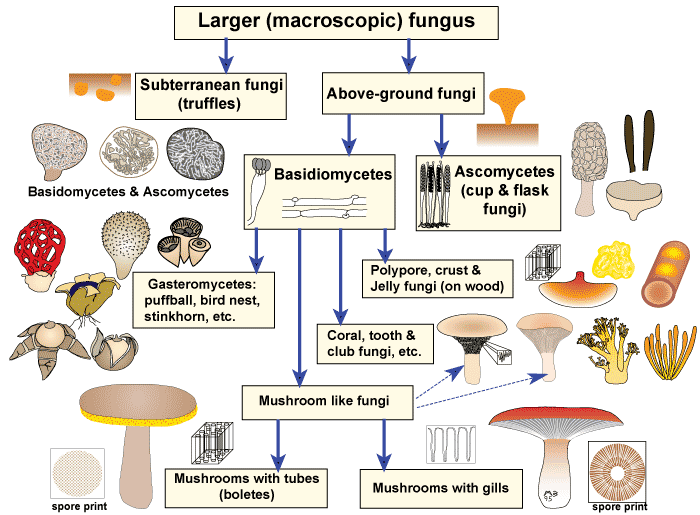Fungi, a diverse kingdom of life, play an integral role in the biosphere, serving as decomposers, pathogens, and symbiotic partners. Their unique cellular structures and metabolic pathways render them invaluable in various scientific disciplines, ranging from biotechnology to medicine. This article explores the various types of fungi utilized in scientific research, elucidating their significance and applications.
Fungi can be categorized into several groups, each with distinctive characteristics and potential research applications. These categories include yeasts, molds, mushrooms, and mycorrhizal fungi. Understanding their unique traits and interactions with other organisms paves the way for innovative discoveries in various fields.
Yeasts are unicellular fungi that have garnered significant attention in scientific research, particularly in biochemistry and genetics. Saccharomyces cerevisiae, commonly known as baker’s yeast, is perhaps the most explored species. This yeast serves as a model organism for molecular biology research due to its relatively simple genome and ease of manipulation. The study of yeast has led to groundbreaking discoveries, including insights into cell division, gene expression, and metabolic processes.
Advancing biotechnology, yeast is instrumental in the production of bioethanol, biopharmaceuticals, and even in the synthesis of novel compounds. The ability to engineer yeast strains has expanded their application in synthetic biology, propelling research into enzyme production and bioengineering. Furthermore, yeast serves as a powerful tool in studying eukaryotic cellular processes, providing a glimpse into more complex organisms.
On the other hand, molds, which belong to the genera such as Aspergillus and Penicillium, offer exciting vistas for scientific exploration. Molds are multicellular fungi characterized by their filamentous structures known as hyphae. They are primarily known for their role in decomposition but also for their pharmaceutical contributions. The discovery of penicillin from the mold Penicillium notatum marked the dawn of the antibiotic era, revolutionizing medicine.
Research on molds continues to unveil new antibiotics, antifungals, and other bioactive compounds. Their complex life cycles and diverse metabolic capabilities make them ideal candidates for studies in environmental microbiology and biodegradation. Moreover, molds are often employed in biotechnological applications, including fermentation processes and food production, exemplifying their multifaceted relevance in science.
Mushrooms, the fleshy fruiting bodies of certain fungi, are often recognized for their culinary and nutritional properties; however, their research potential extends far beyond gastronomy. The genus Ganoderma, for instance, is known for its medicinal properties, particularly in Traditional Chinese Medicine. Mushrooms contain bioactive compounds, such as polysaccharides and triterpenes, which exhibit immunomodulatory and anticancer activities, making them a subject of interest in pharmacological research.
Furthermore, mushrooms serve as vital ecological players, forming symbiotic relationships with plants through mycorrhizal networks. Exploring these relationships can yield insights into nutrient cycling and ecosystem dynamics. Recent studies on mycorrhizal fungi have highlighted their role in enhancing plant resilience to stressors, such as drought and soil degradation. Thus, the investigation of mushroom fungi also intersects with ecological and environmental science.
Mycorrhizal fungi, in particular, establish mutualistic relationships with plant roots, enhancing nutrient uptake and improving plant health. These unique fungi can be classified into two main types: ectomycorrhizal fungi and arbuscular mycorrhizal fungi. Ectomycorrhizal fungi, such as those from the genus Rhizopogon, form a sheath around the root tips, aiding in the absorption of essential nutrients like phosphorus and nitrogen. Their association with trees, especially conifers, plays a crucial role in forest ecosystems, thereby impacting biodiversity and carbon cycling.
On the other hand, arbuscular mycorrhizal fungi, represented by Glomus species, penetrate root cells, establishing highly efficient nutrient exchange systems. This relationship is particularly significant in agricultural contexts, as these fungi enhance crop productivity and resilience against pathogens. Research in this arena can guide sustainable agricultural practices, offering the potential to mitigate the impacts of food insecurity.
As our understanding of fungal biology expands, so does the exploration of lesser-known fungi. Extremophilic fungi, for instance, thrive in extreme environments, such as high salinity, radiation, or temperature. Investigating these resilient organisms not only broadens our understanding of life on Earth but can also inform astrobiology, shedding light on the potential for life in extreme extraterrestrial environments. Cryptococcus neoformans, a pathogenic yeast that can survive extreme conditions, provides insights into fungal adaptability while posing challenges in clinical settings.
The applications of fungi in scientific research are virtually boundless. From bioremediation—where fungi are harnessed to degrade environmental pollutants—to the development of mycelium-based materials for sustainable manufacturing, these organisms offer innovative solutions to pressing global challenges. Research into fungal genetic engineering is also advancing, unlocking the potential for synthesizing novel compounds that could lead to breakthroughs in medicine and industrial biotechnology.
Furthermore, the rise of citizen science and educational initiatives centered around fungi is fostering a new generation of scientists. Engaging young minds through mycology clubs, foraging events, and hands-on laboratory experiences promotes awareness and enthusiasm for fungal research. These initiatives not only cultivate a deeper appreciation for biodiversity but also inspire future innovations in fungal biotechnology and environmental stewardship.
In conclusion, the diversity of fungi presents an exciting frontier for scientific inquiry. From yeasts that elucidate fundamental biological processes to molds that yield precious pharmaceuticals and mushrooms that enhance ecological health, fungi are intrinsically woven into the fabric of life on Earth. The continued exploration of these enigmatic organisms holds the promise of significant advancements across various fields, encouraging today’s youth to embark on a journey of discovery. By bridging the gap between mycology and young scientists, we can unlock the latent potential of fungi to address the world’s most challenging problems.
While the journey into the world of fungi is only beginning, the prospects are vast. Embracing the complexities of these organisms will undoubtedly lead to exciting revelations, contributing to our understanding of life, health, and the environment in profound ways.
